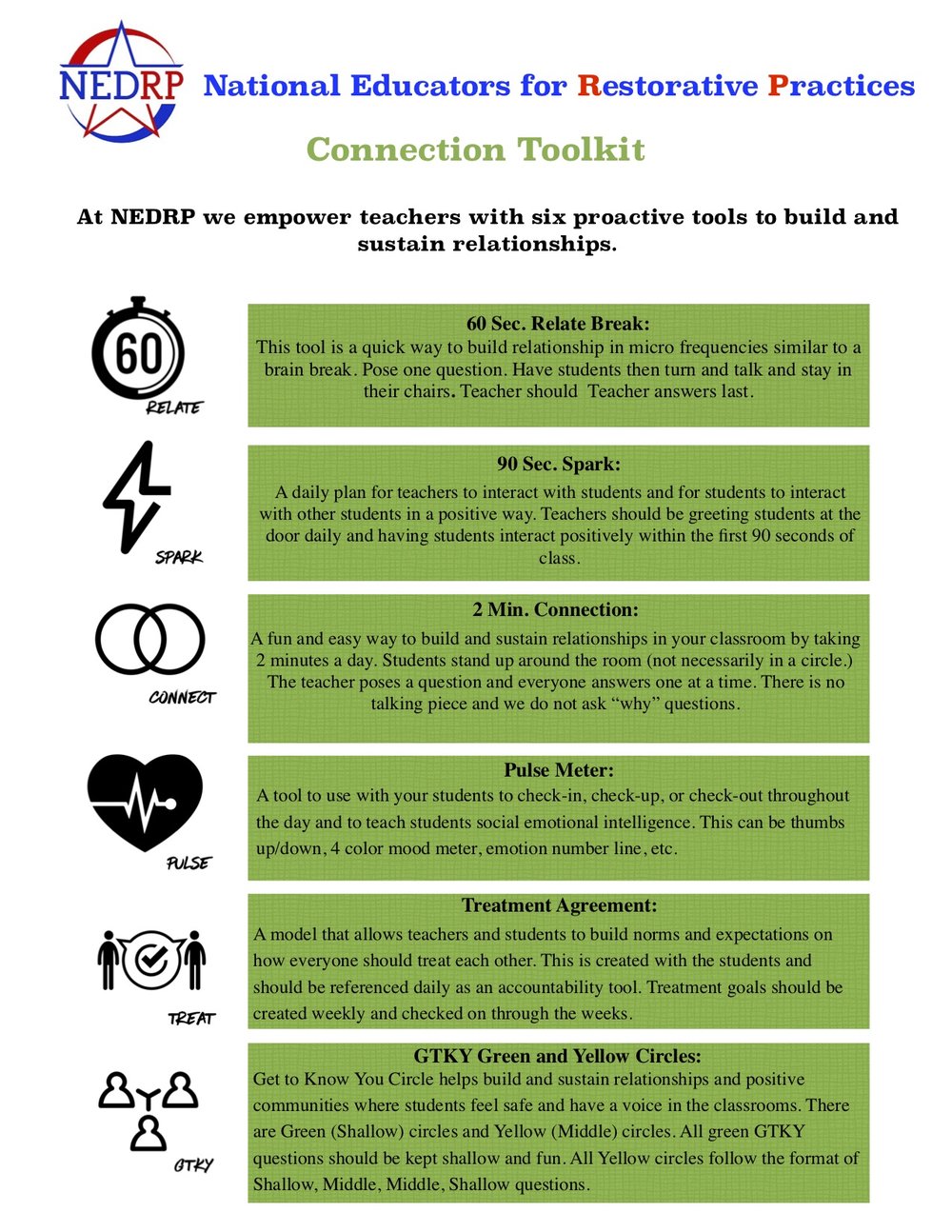You may recall from your own time at school that students who were disrupting the classroom were removed from the classroom. Continued disruptions might result in removing a student from the school—a suspension. Studies done on these forms of discipline found two important things: they don’t improve student behavior and they disproportionately target students of color.
Our district engages in restorative practices, a positive approach to discipline that reduces or eliminates the need to remove a child from the classroom for disruptive behavior and has been shown to greatly reduce suspensions, especially for students of color. Our staff meets regularly to learn about restorative practices and how to respond to discipline incidents.
Diven Elementary has three restorative practices we use in every classroom: treatment agreements, SPARKS, and pulse meters.
A treatment agreement is literally an agreement between the students and teachers on how we will treat each other in the classrooms. During the first week of school, your children worked in class to make their own treatment agreements. Each student talked about how they should treat one another, how they should treat the teacher, how the teacher should treat the students, and what they can do to make things right when they are having a problem sticking to their treatment agreement. You can find the treatment agreement in your child’s classroom or ask your child about the treatment agreement.
SPARKS are little sparks of joy throughout the day! They provide emotional support and engagement for each student. You’ll see us using SPARKS when our children come to class in the morning, after lunch, and anytime we need a little pick-me-up. Some of our teachers have special handshakes they use with each student, others have a special greeting. Whether it’s a hug, a wave, a high-five, a fist bump, or a silly dance, these fun routines create trust between students and teachers and set a happy tone that gets things going on the right foot.
Pulse Meters are how we gauge students’ moods. We use them to teach our little ones three important lessons: (1) moods can change quickly; (2) our emotions affect how we learn and act; (3) we can change others’ moods depending on how we treat them. Being aware of how we are feeling is the first step in taking control of our emotions. It’s our hope that pulse meters will help your child become more emotionally intelligent.
If you have any more questions about restorative practices, we have answers!
